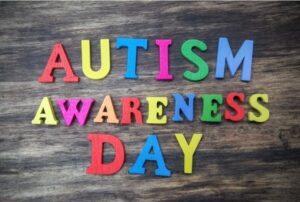Tonsils are crucial organs in the body’s immune system, playing a significant role in protecting against infections. However, they are often overlooked unless they become inflamed or infected. Understanding what tonsils are, how they function, and how to manage tonsillitis can help you take better care of your child’s health.
What Are Tonsils?
Tonsils are paired lymphoid organs located at the back of the throat. They are part of the body’s lymphatic system, which is responsible for fighting infections. The tonsils play a key role in the immune response by trapping pathogens that enter through the mouth or nose, such as bacteria and viruses. They produce lymphocytes (a type of white blood cell) and antibodies that help the body fight off infections.
Types of Tonsils
Tonsils can be classified into four different types based on their location in the body:
- Palatine Tonsils: The most commonly known tonsils, located on either side of the back of the throat.
- Lingual Tonsils: Located at the base of the tongue.
- Pharyngeal Tonsils (Adenoids): Found at the back of the nasal cavity.
- Tubal Tonsils: Located near the opening of the Eustachian tube in the ear.
Symptoms of Tonsillitis
Tonsillitis refers to the inflammation of the tonsils, often caused by either viral or bacterial infections. It is most common in young children, particularly those of preschool and school-age.
Common Symptoms of Tonsillitis in Children
- Red, Swollen Tonsils: Tonsils appear enlarged, and they may be redder than usual.
- White or Yellow Spots on the Tonsils: These could be pus-filled spots that signal an infection.
- Sore Throat: Pain and discomfort, especially when swallowing.
- Difficulty or Pain While Swallowing: The swollen tonsils can make it hard to swallow food or liquids.
- Fever: A high temperature is common with tonsillitis.
- Enlarged and Painful Neck Lymph Nodes: Swelling and tenderness in the neck as a result of the infection.
- Hoarseness or Low Voice: The inflammation may affect the vocal cords, leading to a change in voice.
- Bad Breath: Known as halitosis, this can be a sign of a bacterial infection.
- Refusal to Eat: Pain while swallowing can make eating difficult, causing a child to refuse food.
- Unusual Irritability: Children may become more irritable due to the discomfort and illness.
Causes of Tonsillitis
Tonsillitis can be caused by various factors, but the most common causes are:
- Viral Infections: Viruses such as the common cold virus, influenza, and Epstein-Barr virus can lead to tonsillitis.
- Bacterial Infections: The most common bacterial cause is Group A Streptococcus (strep throat). This type of infection requires antibiotic treatment.
Treatment for Tonsillitis
Treatment for tonsillitis depends on the underlying cause (viral or bacterial) and the severity of the symptoms.
Viral Tonsillitis
Viral tonsillitis usually resolves on its own within 7-10 days. However, during this time, children should:
- Rest: Ensure the child gets adequate rest to help the immune system fight off the infection.
- Hydrate: Encourage drinking plenty of fluids to prevent dehydration and soothe the throat.
- Saltwater Gargles: Gargling with warm salt water can help alleviate throat pain.
- Humidify the Air: Use a humidifier to add moisture to the air, which can help soothe a dry or scratchy throat.
- Lozenges: Throat lozenges or popsicles can provide some relief from throat pain.
- Fever Reduction: Fever-reducing medications like acetaminophen or ibuprofen can help reduce fever and discomfort.
Bacterial Tonsillitis
If the tonsillitis is caused by a bacterial infection, such as Group A Streptococcus, antibiotics will be required. Penicillin is the standard treatment for bacterial tonsillitis, and the course typically lasts for 10 days. It’s important to complete the entire course of antibiotics to fully eradicate the infection, even if symptoms improve before the medication is finished. If the child is allergic to penicillin, alternative antibiotics such as amoxicillin or cephalexin may be prescribed.
Surgical Treatment (Tonsillectomy)
In some cases, if a child experiences recurrent or severe tonsillitis, a tonsillectomy (surgical removal of the tonsils) may be considered. This is typically recommended if:
- The child has multiple episodes of tonsillitis per year.
- There is a risk of complications, such as sleep apnea or difficulty swallowing.
- Tonsillitis does not respond to other treatments.
Tonsillectomy is usually performed as an outpatient procedure, and recovery typically involves pain management and rest for several days.
Preventing Tonsillitis
While it’s not always possible to prevent tonsillitis, there are some measures that can help reduce the risk of infection:
- Good Hygiene: Teach children to wash their hands regularly, especially before eating and after coughing or sneezing.
- Avoid Close Contact: Keep children away from individuals who are sick, especially those with strep throat or cold-like symptoms.
- Boost Immunity: Ensure your child eats a balanced diet, gets enough sleep, and engages in regular physical activity to maintain a strong immune system.
When to Seek Medical Help
It’s important to seek medical attention if your child experiences:
- Severe throat pain or difficulty breathing.
- High fever (over 102°F or 39°C) that doesn’t respond to fever-reducing medications.
- Difficulty swallowing or drooling, which may indicate a more serious infection.
- A persistent sore throat or symptoms that last longer than 10 days.
Frequently Asked Questions (FAQ)
- How do I know if my child’s tonsillitis is viral or bacterial? A healthcare provider will typically diagnose the type of tonsillitis based on symptoms, throat culture, or a rapid strep test.
- Can tonsillitis be contagious? Yes, both viral and bacterial tonsillitis can be contagious. Make sure your child avoids close contact with others until they are no longer contagious.
- Are there any natural remedies to treat tonsillitis? While natural remedies like saltwater gargles and honey can soothe a sore throat, they should not replace medical treatment, especially for bacterial tonsillitis.
- What if my child needs a tonsillectomy? If a tonsillectomy is necessary, your child will undergo surgery to remove the tonsils. Post-surgery, follow the doctor’s instructions for pain management and recovery.
- Can tonsillitis affect adults? Yes, although tonsillitis is more common in children, adults can also develop it, particularly from bacterial infections like strep throat.
References:
- Mayo Clinic Family Health Book
- American Academy of Pediatrics: Tonsillitis and Tonsillectomy
- National Institutes of Health (NIH): Tonsillitis in Children













